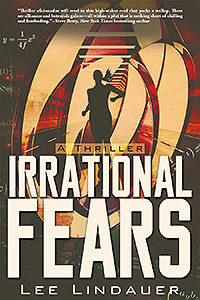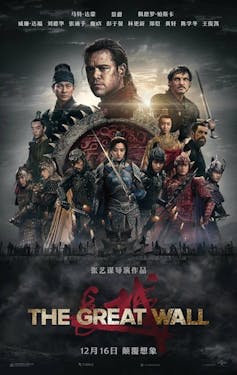
by Lee Lindauer. International action / math thriller. (May 2018)
After witnessing the horrifying murder of her friend Tom
Haley, Mallory Lowe, a cautious university mathematics professor, must
emerge from her cocoon to become the gutsy and unpredictable woman she’s
always dreamed of being. Running on the guilt of a past family tragedy
that she blames on herself, Mallory is determined to find Tom’s
now-missing daughter.
Following the clues in a 300-year-old equation left by Tom, Mallory’s
search propels her into the tangled threads of a ruthless corporate
entity known as Möbius, bent on controlling the world’s most precious
resource: fresh water. Mallory is propelled along a perilous journey
from the southwest United States through the breathtaking landscape of
Switzerland and into the inner workings of a massive hydroelectric dam
in Turkey. She solves the riddle of the centuries old mathematics
equation—only to discover something more ominous and deadly in the
process.
Hard Math, Easy Read: Using a math-based plot to tell a great story
When I set out many years ago with the crazy idea to be a fiction
writer, one of the first items on the agenda was to create a
protagonist, one that was
unique, multi-dimensional and
complex.
After my first novel, I realized my main protagonist was flat, a
one-dimensional person I had a hard time fleshing out. What I needed was
a protagonist that had a little bit of my interests and background.
Having had a career in engineering, I decided to zero in on a
protagonist who found math and science exciting. I settled on math.
Mathematics is definitely an area that all engineers must experience
during their college years. I then had an epiphany—this mathematician
protagonist should be a woman—
unique and complex—someone who
goes against the perception that all math geeks are men. Thus the next
three novels I wrote included Mallory Lowe, a tenured university
mathematics professor. The third of these novels is titled IRRATIONAL
FEARS, and can be found at Amazon.com.
Science in novels is not unique. Readers of ScienceThrillers.com will attest to that. What about mathematics?
There have been several novels with mathematicians (crazy, brilliant,
or both) written with themes centering on mathematical philosophies such
as Neal Stephenson’s
Anathem. The trouble with writing about
math in novels is the misconception that the reader is not math-worthy—a
reader who cringes when it comes to discussing mathematical concepts.
These are people who hated math in school or feared it since it held an
overbearing abstraction for them.
The key then was to write a math-centric novel that keeps the
reader’s attention. Mathematical concepts must be written such that the
layman should not be intimidated by them. This can be a tough chore, but
one I believe can also be self-gratifying if the author can pull it
off.
In IRRATIONAL FEARS,
the plot revolves around a 300 year-old equation, THE BASEL PROBLEM, a very unique infinite series:
1 + 1/22 + 1/32 + 1/42 + 1/52 + 1/62 + … + 1/k2 + … = π2/6
The summation of reciprocals of squares on the left equals the odd π
2/6
on the right. The more terms on the left that are added, the closer to
the answer on the right—a subliminal relationship of inverse squares to
circles. This is a fascinating problem in number theory, but the reader
may ask,
okay, I think I understand it,
so what? Why is this important? No spoiler here. Read IRRATIONAL FEARS to find out why.
Let’s not forget—mathematics is the language of science. Let’s take
for example, the constant e which equals 2.71828… Where does this
seemingly non-descript number come from? In mathematical jargon, e =

In
other words if n= 10, then e= 2.59374246… If n=1,000,000,000, then e =
2.71828183… As n approaches infinity, then e approaches a limit, that
being the number e = 2.71828183… Why is e so important? Let’s talk
finance. Bankers love e because it is the background of compound
interest, and they love nothing more than charging you interest on a
loan. In the scientific arena, e pops up in a variety of
ways—determining population growth in humans, or in bacteria, in
depletion of tuna fisheries, and so forth. And in physics e is used to
calculate time frames of radioactive decay, in heat transfer phenomena,
and shows up in all types of waves—light, sound, etc.
So when mathematical concepts pop up in fiction, don’t be
intimidated. They are there to drive the plot. Don’t get hung up on
equations and don’t get frustrated.
A good writer will assure
the reader will not feel pressured to understand each math concept. The
unsuspecting reader will then have fun.
“A smashing debut, Irrational Fears is an action-packed, globetrotting adventure, and Lee Lindauer is the heir apparent to adventure thrillers.” —Anthony Franze, author of The Outsider
“Irrational Fears weaves age-old mathematics and the world’s most essential resource with unique characters and unrelenting tension.”—Bob Mayer, NYT bestselling author
About the Author:
 Lee Lindauer
Lee Lindauer has a BS in Architectural Engineering and a MS in Civil Engineering and
was a principal of a consulting structural engineering firm he founded
in Western Colorado. It is hard to say what got him into writing but
after thirty-some years of consulting, he decided a new diversion would
be welcome. Thus, the writing bug took over. In 2009, he retired. When
he’s not punching a keyboard, he takes advantage of the amazing public
spaces that the West has to offer (he is a Colorado native), from
camping, rafting, hiking (try Angel’s Landing in Zion National Park), to
lazily enjoying the sunset as it drapes the ragged peaks of the San
Juan Mountains in various shades of crimson (beer in hand, of course).













 by Lee Lindauer. International action / math thriller. (May 2018)
by Lee Lindauer. International action / math thriller. (May 2018)














